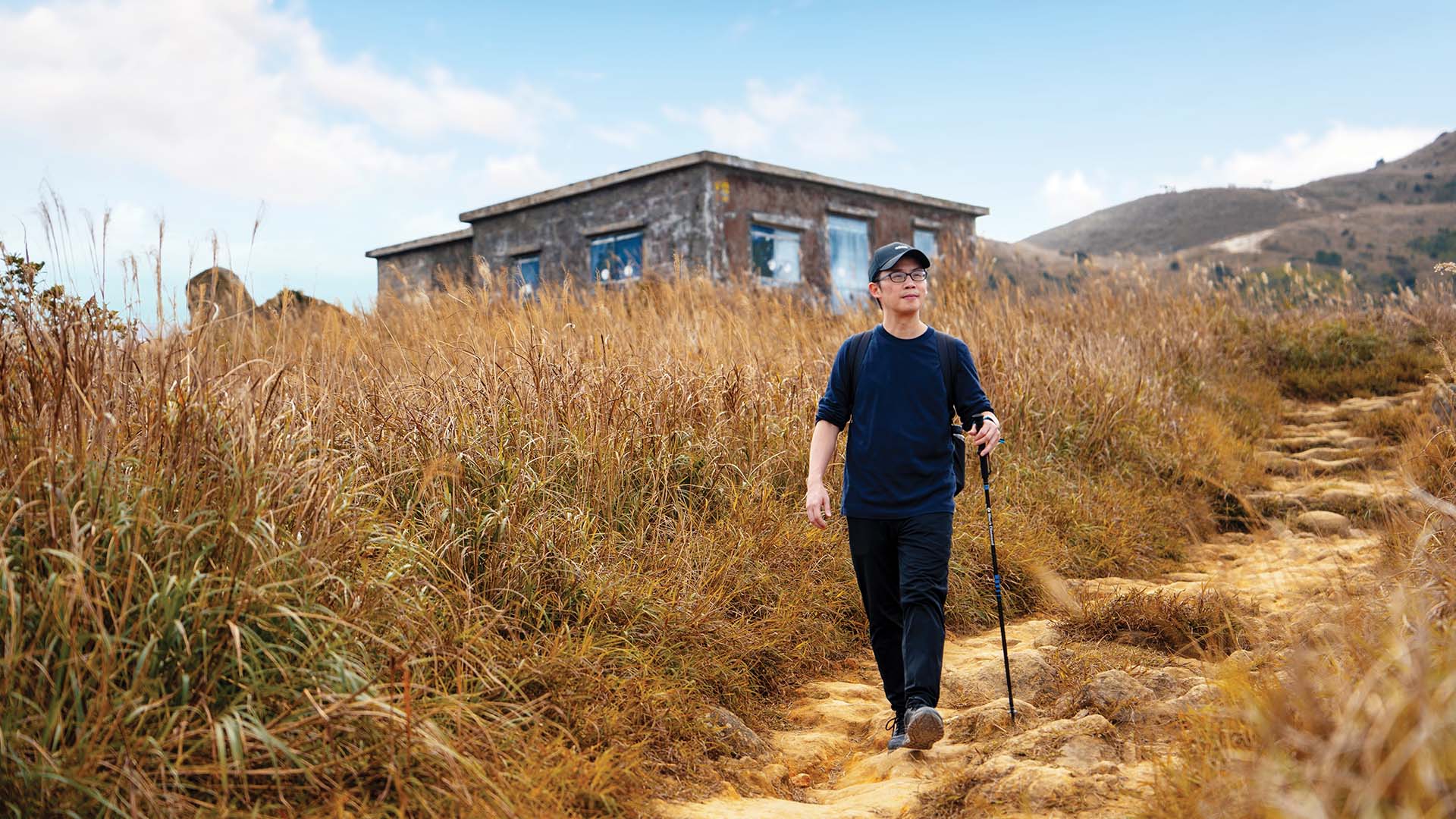
International award-winning architect Thomas Chung is engrossed in a project that diverges from Hong Kong’s iconic skyscrapers and high-density developments. Instead, he is concentrating on 19 tiny, remote stone cabins dotted across a mountainside on Lantau Island.
Chung, an associate professor at The Chinese University of Hong Kong’s School of Architecture, heads a multidisciplinary team with expertise in architecture, anthropology, ecology, geography and life science. He previously focused on urban areas in Hong Kong such as Central, Sheung Wan and Shau Kei Wan, but has turned his attention to rural villages since 2014.
“When looking at Hong Kong, many architects go straight to studying the high-density, inner-city areas, but I realised — both on the teaching and research levels — there is more to explore beyond those,” says Chung.
Falling in love with Lantau
Chung shifted focus to Lantau Island in 2021 while working on a project supported by the Government’s Lantau Conservation Fund to preserve the 400-year-old village of Shui Hau, along the southern coast of the island.
During this time, he discovered the flat-roofed cabins of Lantau Mountain Camp, nestled on the slopes below Sunset Peak (Hong Kong’s third-highest mountain at 869 metres) and Yi Tung Shan (the ninth highest at 747 metres).
“In the early 20th century, missionaries from different countries — the United States, United Kingdom, Scandinavia, Switzerland and Germany — would go there as a summer getaway. Some of them would meet there for the first time. They really had a community there,” he says.
Some of these rough-hewn, single-storey cabins, ranging in size from 200 to 400 square feet, with two or three rooms and a bathroom but no mains electricity, still belong to the churches that built them in the mid-1920s and early 1930s.
Other cabins have been bought by individuals seeking tranquillity, cooler summer days, and the spectacular views of mountain and city. On clear days, one can see Kowloon, Cheung Chau, the Hong Kong International Airport and Shenzhen.
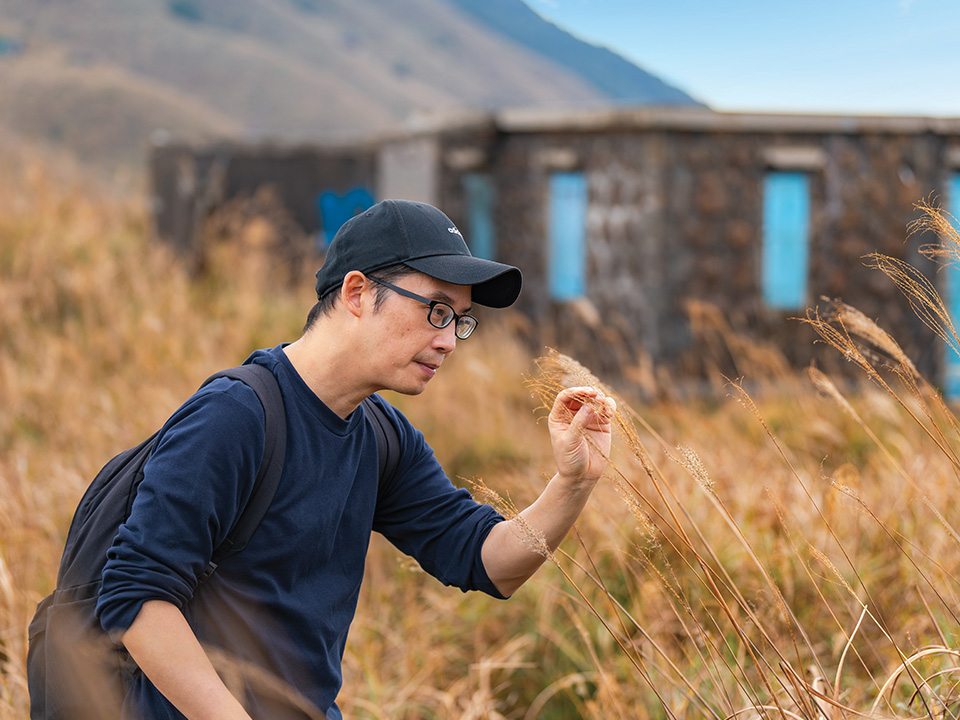
Chung vividly recalls his first visit to the area in November, when the landscape was adorned with a vast golden field of Chinese silvergrass (Miscanthus sinensis), which can grow up to two metres tall.
“As you go higher up, it becomes drier, and the vegetation is different. Then you arrive and see the cabins scattered on two slopes with a ‘saddle’ in between,” he describes. “And you can see the clouds around, and then the city in the background. The view is majestic.”
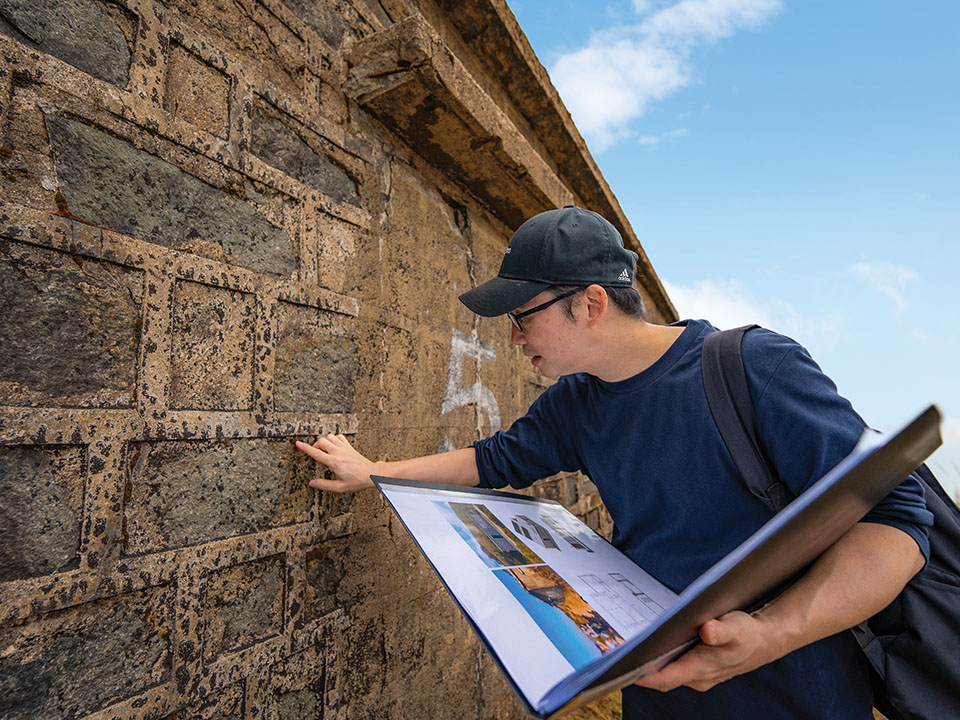
The visit that sparked a mission
Inspired by his experiences, Chung formed a research team with the camp’s residents to start another project, also supported by the fund, titled ‘Regenerating the Landscape of Lantau Mountain Camp: Co-creative Architectural Restoration and Natural Conservation through Participatory Initiatives’.
Starting in 2023, the three-year initiative aims to restore a strategically located cabin as a functional ‘support station’ to provide emergency essentials for visitors and facilitate pilot conservation research.
“The architectural restoration will be a starting point. We will restore one of the cabins, which is called the ‘Caretaker’s Hut’, where people who know about mountains will be stationed to provide help in emergencies and take care of the landscape. They will also be there to educate visitors on what to do and what not to do,” Chung explains.
Chung finds the construction of the cabins fascinating. Built with 40-centimetre-thick stones, they showcase pragmatism and compactness. “Most of them are made of large rectangular blocks and a few of them consist of round ones. From the shutters, which are secured by metal bars, and the rooms with small skylights, you can see that they were built in a protective way,” he describes.
The design of these cabins likely stems from past experiences. Missionaries had previously constructed a camp on Tai Mo Shan (Hong Kong’s highest peak at 957 metres), only for it to be destroyed by a typhoon. However, the robust walls of the Lantau Mountain Camp’s cabins have withstood almost a century of periodic extreme weather conditions.
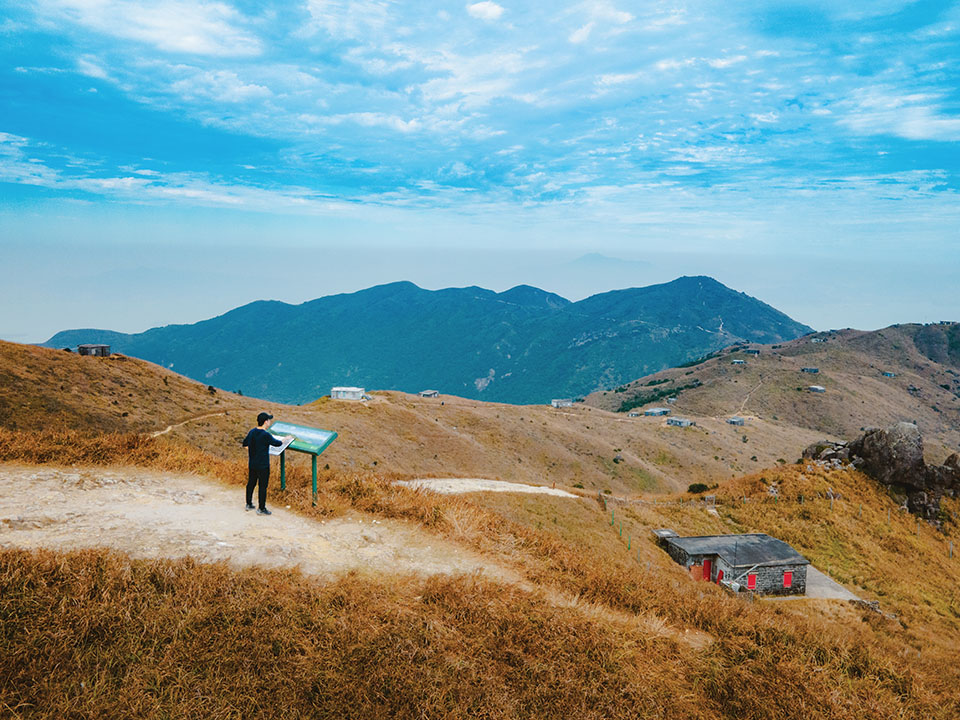
Bringing the mountain camp stories to the public
The project has introduced Chung to some of the residents, including Mark Loasby, a managing director and chairman of the Lantau Mountain Camp Residents Association, who has been assisting the study.
Chung’s team is now documenting stories about the camp, including how early residents connected with the visitors attracted to the site and the nearby villages for supplies over the decades. “The missionaries at the camp were making friends all around Lantau,” Chung says.
He hopes to eventually create a 360-degree virtual reality experience of the area, accessible to the public on computers and mobile phones, to encourage everyone to recognise that Lantau Mountain Camp is an important historical asset worth conserving. “We want to find out all the different aspects of the site and disseminate the information to people,” Chung says. “We are also planning experimental activities on the site and in the city centre to get people involved and educate them about the site and how to take care of it.”
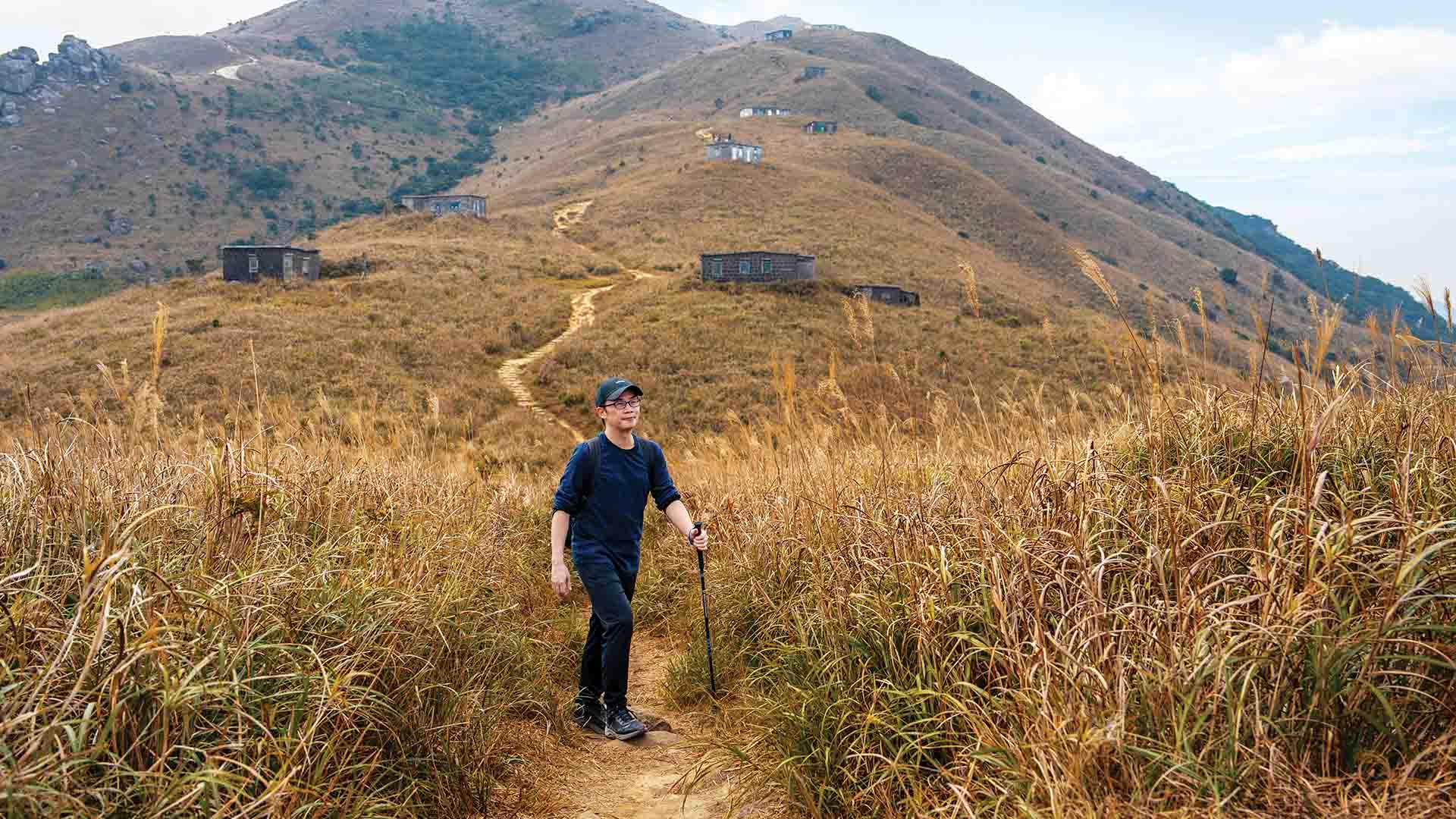
5 tips from Chung for visiting Lantau Island
- The cabins at the Lantau Mountain Camp are private properties and many of their owners actually live in them, so visitors should keep a respectable distance from them.
- From the highest cabin on the west end of the camp, you can enjoy breathtaking views of the Hong Kong International Airport, Kowloon, Cheung Chau and South Lantau. On clear days, glimpses of Shenzhen in the distance are also visible.
- While ascending Sunset Peak, rolling clouds create an ethereal atmosphere, alternating between misty fog and a radiant sky. As you descend, the twilight glow on the mountain silhouette is unforgettable.
- The silvergrass is a picturesque sight, but hikers should refrain from walking into the fields as it may harm the plant’s roots.
- Lantau Island is rich in biodiversity and home to many animal species. However, noise pollution can negatively impact them. Visitors should avoid making excessive noise or playing loud music while exploring the area.



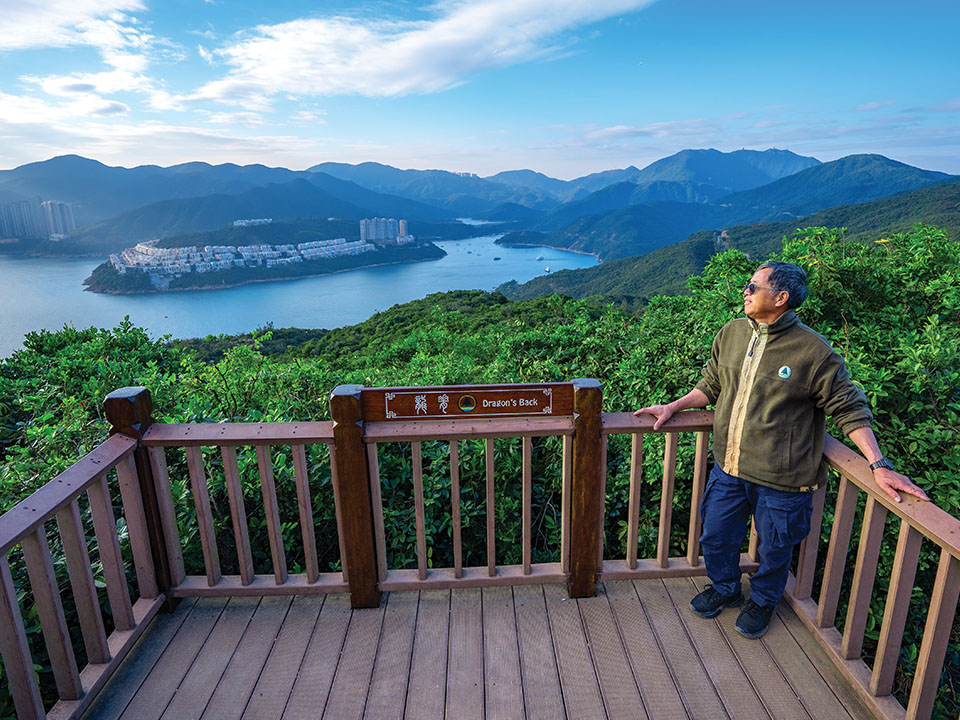
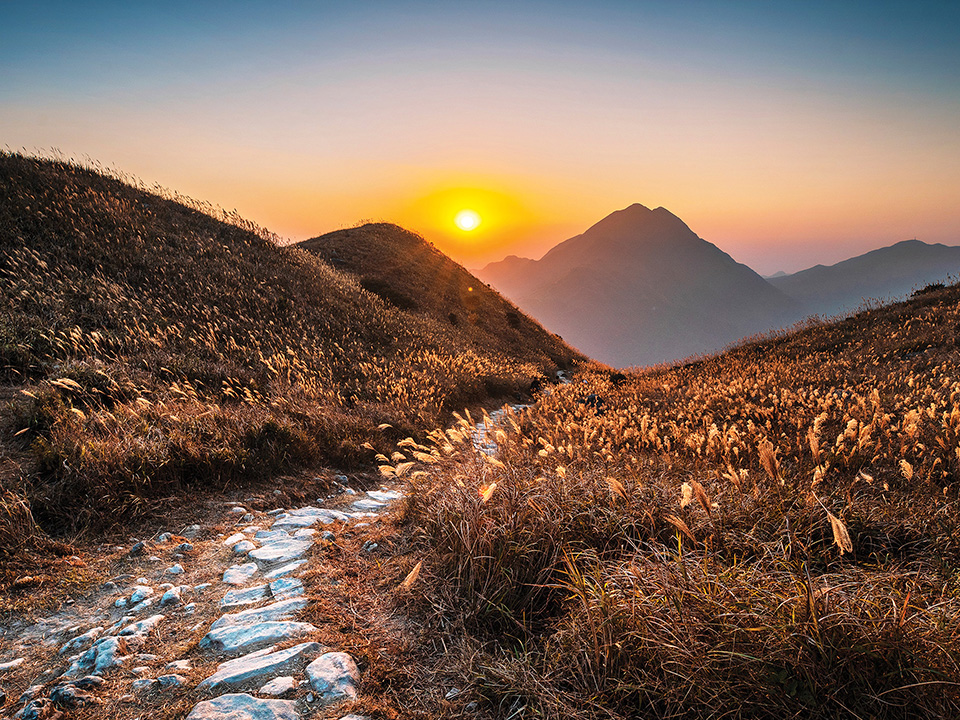
 Live Chat
Live Chat









